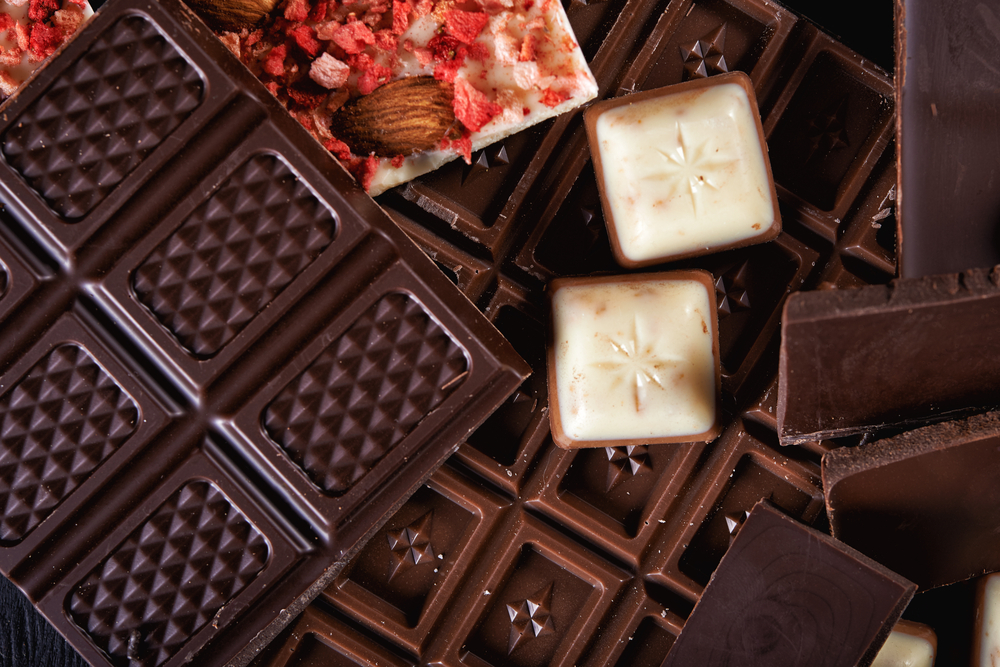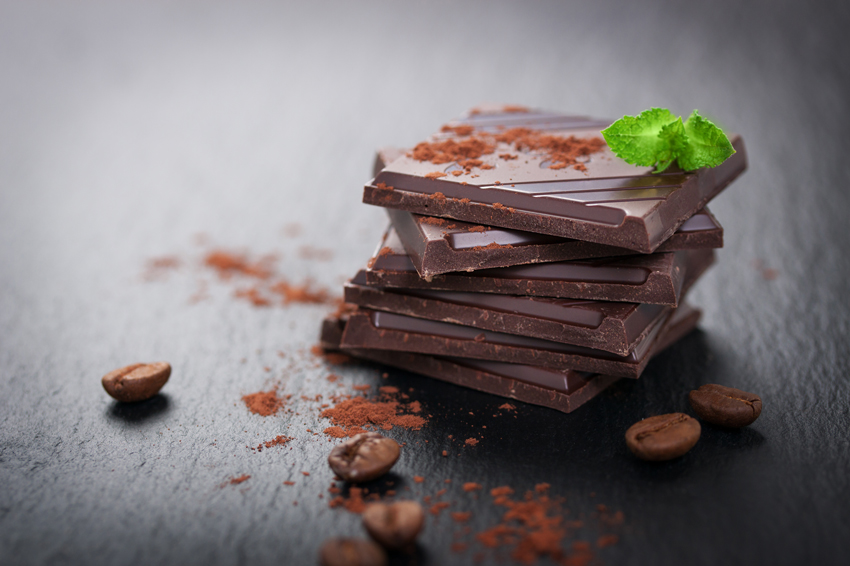What comes in bars, eggs, rabbits and powder and is loved the world over? Chocolate, of course! And guess what? It’s almost Easter! And it’s going to be hard to resist temptation… OK, OK… you can give in, but only after you’ve learned everything you need to know about it! Does chocolate, an ingredient that makes your dessert richer and adds a sweet touch to your coffee, have benefits for your body? How does it affect your health if you eat it every day? In this article, we’ll tell you all the secrets about chocolate.
Chocolate had to travel pretty far before it tickled your taste buds as a chocolate rabbit, candy bar, sauce or ice cream flavor. It goes through a range of processing before you can enjoy it in its many shapes and flavors.
Chocolate is the product of a variety of processing methods, coming from the cocoa beans grown in contained in pods, which is the fruit of the cacao tree. This tree is native to the plains of South and Central America, where it was first grown as early as 1400-1100 BC, according to archaeologists.

The pod is split and its beans are harvested, which are then fermented in order to remove pulp that surrounds them. This reduced their bitterness. Next, they’re roasted like coffee beans to bring out their flavor. Then the cocoa beans are crushed and melted into a viscous paste called cocoa mass. Cocoa mass can also undergo additional processing to create cocoa liquor or cocoa butter.
The different types of chocolate are created by combining a variety of ingredients. To get dark chocolate, cocoa butter is mixed with cocoa solids and sugar. By adding milk powder, this turns it into milk chocolate. Nuts or spices such as vanilla can also be added. With chocolate, the possibilities are endless!
In the beginning, this sweet treat you love was a noble food and a rare commodity for the Maya. They used it to seal marriage negotiations and in funeral rites, burying their dead with it so they could take it with them to the afterlife. The Maya grew cocoa beans to make hot and bitter beverages. Aztec nobles also used chocolate to spice up in savory dishes that included meat or corn, for example.
Until the 16th century, chocolate was still unknown to the Western world. Hernán Cortès, a Spanish conquistador, conquered the Aztec territories and brought this chocolate beverage to Europe in 1528. It quickly became a hit with Spanish aristocracy and clergy before dominating the rest of Europe. Then, thanks to the Industrial Revolution, chocolate was used to create the products we know and love today.
We all know that chocolate delights your taste buds, does it also contain significant health benefits? Although it comes in dark, milk and white chocolate, these different types don’t all have the same benefits.
The less sugar chocolate contains, the better it is for your health! To stay in shape and enjoy the powers of chocolate, steer clear of white and milk chocolate, which contain too much fat and sugar
Instead, eat dark chocolate with a minimum of 70%. It has a much richer flavor and many more health benefits. It’s high in magnesium and iron, making it a great way to fight seasonal depression. It also reduces your risk of cardiovascular disease, keeps cholesterol from clogging your arteries and thins out your blood. A study conducted by Dutch researchers shows that eating dark chocolate twice a week or more reduces the risk of arterial calcification, due to cholesterol or aging, by 32%. When eaten less than twice a week, the results are less significant.

Dark chocolate also contains flavanols, which are chemical substances that protect your skin from sun damage while keeping it hydrated. Flavanols also have beneficial effects on memory. Published in the New York Times, a study conducted by neurological researchers at Columbia University in New York City shows that flavanols fight memory loss. Thirty-seven volunteers, aged 50 to 69 and separated into two groups, were put on two different diets. The first group drank one cocoa-infused beverage a day, highly concentrated in flavanols, while the latter drank one with a much lower level of flavanols. After three months, they took a memory test. Volunteers in the first group performed significantly better than those in the second group. When the study began, they had the memory capacity of someone in their 60s and by the time it was finished, they had the memory capacity of someone in their 30s to early 40s. Sadly, chocolate only contains very small amounts of flavanols, so you can’t use this excuse to load up on chocolate on Easter. That’s why eating it in moderation is the way to go.
Although chocolate can be both an enemy and an ally for your physical health, there’s no denying that it has advantages for your mind, because chocolate helps you relieve stress. Cocoa contains theobromine, which has positive effects on your mood. Researchers in Saudi Arabia have shown that by eating dark chocolate on a regular basis over a period of two weeks, the stress experienced by female volunteers was significantly reduced.
So why not see for yourself how effective chocolate can be to boost your mood when you’re feeling down? But make sure to eat it in moderation, of course. And if that’s not enough for you, physical activity is a surefire way to relieve stress because of the hormones produced by exercise. And the best part is, it’s not fattening! Start your FizzUp workout now!
Join the 7 million users already registered on FizzUp
Join us